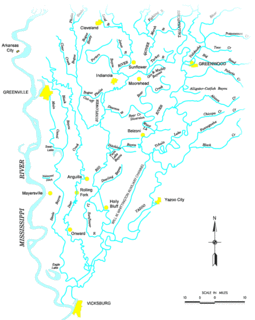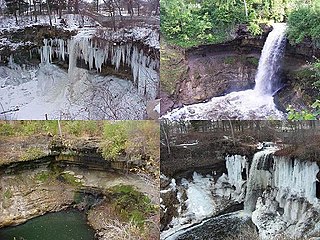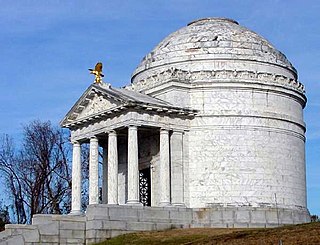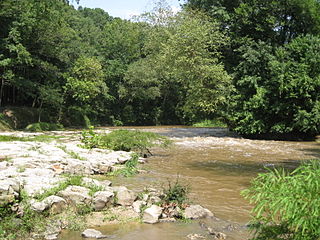Related Research Articles

Minnehaha County is a county on the eastern border of the state of South Dakota. As of the 2020 United States Census, the population was 197,214, making it the state's most populous county. It contains over 20% of the state's population. Its county seat is Sioux Falls, South Dakota's largest city. The county was created in 1862 and organized in 1868. Its name was derived from the Sioux word Mnihaha, meaning "rapid water," or "waterfall".

Yazoo County is a county located in the U.S. state of Mississippi. As of the 2010 census, the population was 28,065. The county seat is Yazoo City. It is named for the Yazoo River, which forms its western border. Its name is said to come from a Choctaw language word meaning "River of Death."

Lamar County is a county located in the U.S. state of Mississippi. As of the 2010 census, the population was 55,658. Its county seat is Purvis. Named for Confederate Lucius Quintus Cincinnatus Lamar, the county was carved out of Marion County to the west in 1904.

Coahoma County is a county located in the U.S. state of Mississippi. As of the 2010 census, the population was 26,151. Its county seat is Clarksdale.

Horseshoe Lake is a town in Crittenden County, Arkansas, United States. The population was 264 at the 2020 census.

Minnetonka is a suburban city in Hennepin County, Minnesota, United States, about 9 miles (14 km) west of Minneapolis. The name comes from the Dakota Sioux mni tanka, meaning "great water". U.S. Highway 12 is the city’s main road.

The Yazoo River is a river in the U.S. states of Louisiana and Mississippi. It is considered by some to mark the southern boundary of what is called the Mississippi Delta, a broad floodplain that was cultivated for cotton plantations before the American Civil War. It has continued to be devoted to large-scale agriculture.

Minnehaha Park is a city park in Minneapolis, Minnesota, United States, and home to Minnehaha Falls and the lower reaches of Minnehaha Creek. Officially named Minnehaha Regional Park, it is part of the Minneapolis Park and Recreation Board system and lies within the Mississippi National River and Recreation Area, a unit of the National Park Service. The park was designed by landscape architect Horace W.S. Cleveland in 1883 as part of the Grand Rounds Scenic Byway system, and was part of the popular steamboat Upper Mississippi River "Fashionable Tour" in the 1800s.

Minnehaha Creek is a 22-mile-long (35 km) tributary of the Mississippi River that flows east from Gray's Bay Dam on Lake Minnetonka through the suburban cities of Minnetonka, Hopkins, Saint Louis Park, and Edina, and the city of Minneapolis. The creek flows over Minnehaha Falls in Minnehaha Park near its mouth at the Mississippi River.

Pleasant Valley Township is a township in Scott County, Iowa, United States.

Vicksburg National Military Park preserves the site of the American Civil War Battle of Vicksburg, waged from March 29 to July 4, 1863. The park, located in Vicksburg, Mississippi, also commemorates the greater Vicksburg Campaign which led up to the battle. Reconstructed forts and trenches evoke memories of the 47-day siege that ended in the surrender of the city. Victory here and at Port Hudson, farther south in Louisiana, gave the Union control of the Mississippi River.

The Grand Rounds National Scenic Byway is a linked series of park areas in Minneapolis, Minnesota, United States, that takes a roughly circular path through the city. The Minneapolis Park and Recreation Board developed the system over many years. The corridors include roads for automobile traffic plus separate paths for pedestrians and bicycles, and extend slightly into neighboring cities. About 50 miles (80 km) of roadway and paths are in the system, and much of it was built in the 1930s as part of Civilian Conservation Corps projects.

The Strong River is a 95.2-mile-long (153.2 km) river in south-central Mississippi in the United States. It is a tributary of the Pearl River, which flows to the Gulf of Mexico.
The Plum River is a tributary of the Mississippi River, about 46.6 miles (75.0 km) long, in northwestern Illinois in the United States. It rises in Jo Daviess County and flows generally south-southwestwardly into Carroll County, where it joins the Mississippi at Savanna. Among its several short tributaries are:
Minneapolis is the largest city in the state of Minnesota in the United States, and the county seat of Hennepin County.

The Minnehaha Creek Watershed District's mission is to collaborate with public and private partners to protect and improve land and water for current and future generations. The Minnehaha Creek in its name refers to the water link from Lake Minnetonka to the Mississippi River. The watershed is much bigger than that lake or creek, and includes 29 communities, and encompasses 178 square miles (460 km2). It stretches West from about Minnehaha Falls to Saint Bonifacius and North to Maple Plain. It includes 129 lakes and 8 major creeks in Hennepin and Carver counties. Some of the lakes in the district are: Bde Maka Ska, Harriet, Nokomis, Parley, Minnewashta and Katrina.

The Longfellow House in Minneapolis, Minnesota, United States, is a 2/3 scale replica of Henry Wadsworth Longfellow's home in Cambridge, Massachusetts. Built in 1907, the house was neither seen nor lived in by Longfellow, but was the home of an admiring Minneapolis businessman named Robert "Fish" Jones. Longfellow House stands within Minnehaha Park and is a contributing property to the Minnehaha Park Historic District.

Winchell Trail is a five-mile (8 km) round trip, pedestrian-only trail in Minneapolis, Minnesota, United States, that runs along the west side of the Mississippi River between Franklin Avenue South and East 44th Street. Popular with bird watchers and naturalists, the rustic trail provides Upper Mississippi River gorge access and views. The trail is separate from the adjacent multi-use bicycle path, taking hikers past sandy beaches, an oak savanna restoration project, and the floodplain forest. The trail has multiple access points and the section from East 38th Street to East 44th Street is paved. Described as moderate and for all hiking skill levels, the out-and-back Winchell Trail has total elevation gain of 501 feet (153 m). Portions of the trail can be hiked in near solitude as its age and general destitute make it a widely forgotten place to explore.

Minnehaha Trail is a 1.5-mile (2.4 km) paved, multi-use trail in Minneapolis, Minnesota, United States, that connects Minnehaha Regional Park and Fort Snelling State Park – two of the most popular recreation destinations in the Twin Cities metro area. The trail is considered a segment of a longer, loosely connected bicycle route system along the Mississippi River. Users of Minnehaha Trail traverse under a forest canopy. The trail received local recognition for its natural beauty, but it was criticized for its worn pavement and lack of signage.

Minnehaha Falls Lower Glen Trail is a popular hiking route in Minneapolis, Minnesota, United States. The 2.1-mile (3.4 km) trail loop begins and ends at the base of the iconic Minnehaha Falls. Hikers follow natural trails and elevated boardwalks through a sedimentary rock glen carved by Minnehaha Creek to its confluence with the Mississippi River where there is a sandy beach. Portions of the trail loop are rated moderate to challenging in difficulty.
References
- ↑ U.S. Geological Survey Geographic Names Information System: Minnehaha River
- ↑ Baca, Keith A. (2007). Native American Place Names in Mississippi. University Press of Mississippi. p. 55. ISBN 978-1-60473-483-6.
Coordinates: 31°08′18″N90°27′32″W / 31.1382329°N 90.4589858°W